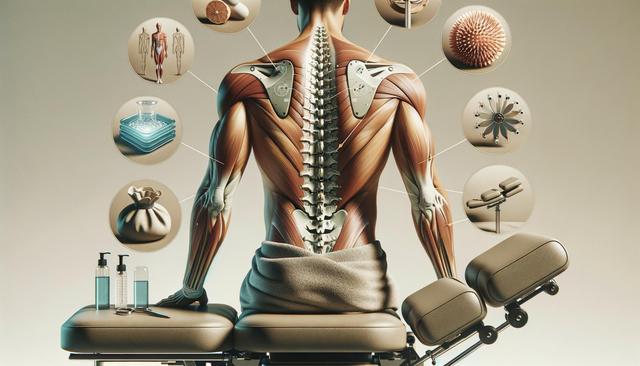Understanding the Causes of Back Pain
Before exploring treatments, it’s essential to understand what causes back pain. Most cases stem from mechanical issues, such as muscle or ligament strain, herniated discs, or poor posture. Chronic conditions like arthritis or osteoporosis can also contribute. Identifying the root cause helps guide appropriate treatment, whether you’re looking for instant lower back pain relief or a long-term solution.
In some cases, lifestyle factors also play a role. Prolonged sitting, improper lifting techniques, and lack of exercise can all increase the risk of lower back pain. A comprehensive approach to treatment requires addressing both the symptoms and the underlying causes.
Common causes of back pain include:
- Muscle or ligament strain
- Bulging or ruptured discs
- Arthritis
- Osteoporosis
- Poor posture or ergonomics
Understanding these factors is the first step in choosing the right treatment, including determining the drug of choice for low back pain when medication is required.
Medications for Managing Chronic and Acute Back Pain
Medications can be effective in reducing pain and inflammation, making them an important part of many treatment plans. There are several medications for chronic low back pain that doctors may recommend, depending on the specific condition and patient history.
Over-the-counter options like acetaminophen or nonsteroidal anti-inflammatory drugs (NSAIDs) are often first-line treatments. For more severe cases, a healthcare provider might prescribe muscle relaxants, opioids (used with caution), or antidepressants that also help with nerve pain. When considering what is the best medicine for severe back pain, the answer varies by individual and should be evaluated by a medical professional.
Some common medication categories for back pain include:
- NSAIDs (e.g., ibuprofen, naproxen)
- Muscle relaxants
- Topical analgesics
- Prescription-strength pain relievers
- Antidepressants for nerve-related pain
Always follow medical advice to avoid side effects and interactions, especially when using multiple medications.
Physical Therapies and Lifestyle Adjustments
In addition to medication, physical therapy and lifestyle changes play a critical role in long-term lower back pain relief. Physical therapists can design personalized exercise programs to strengthen muscles, improve flexibility, and support spinal health.
Regular stretching and targeted workouts can prevent future episodes and enhance mobility. Simple lifestyle habits, like improving posture or switching to an ergonomic chair, can also make a significant difference. For those looking to learn how to get rid of lower back pain in 4 minutes, quick daily routines focused on stretching and core activation can offer rapid comfort.
Helpful activities for back pain management include:
- Gentle yoga or Pilates
- Strengthening core muscles
- Stretching hamstrings and hip flexors
- Using ergonomic furniture at work and home
These non-invasive strategies often complement medical treatments and can lead to sustainable relief over time.
Alternative and Complementary Therapies
Many individuals explore complementary therapies alongside conventional treatments. Techniques like acupuncture, chiropractic care, and massage therapy have shown promise for some people in managing pain and improving function.
Acupuncture involves inserting thin needles into specific points on the body to stimulate nerves and promote healing. Chiropractic adjustments focus on spinal alignment, which may relieve pressure on nerves. Massage therapy enhances circulation and reduces muscle tension, often leading to instant lower back pain relief.
Other alternative options include:
- Mindfulness and meditation practices
- Cognitive behavioral therapy (CBT) for managing chronic pain
- Heat and cold therapy
- Herbal supplements (with medical guidance)
While these methods may not replace medical treatment, they can be valuable additions to a comprehensive care plan.
When to Seek Professional Help
Though many cases of back pain resolve with self-care, some situations require professional attention. If you experience persistent pain, numbness, tingling, or weakness in the legs, it’s essential to consult a healthcare provider. These could be signs of nerve compression or other serious conditions that need immediate evaluation.
A medical professional can conduct imaging tests and recommend a treatment strategy tailored to your needs. They will also help determine the most appropriate drug of choice for low back pain when conservative measures aren’t enough. Do not attempt to self-medicate without proper advice, especially when exploring medications for chronic low back pain.
Signs that indicate you should seek medical help include:
- Pain lasting more than a few weeks
- Sudden, severe pain without an obvious cause
- Loss of bladder or bowel control
- History of cancer or osteoporosis
- Unexplained weight loss along with pain
Timely intervention can prevent complications and lead to more effective relief.
Conclusion
Managing back pain effectively requires a well-rounded approach that includes medications, physical therapy, lifestyle changes, and sometimes alternative treatments. Whether you’re exploring what is the best medicine for severe back pain or wondering how to get rid of lower back pain in 4 minutes, it’s important to tailor your strategy to your specific needs and health history. Always consult with healthcare professionals to ensure your treatment plan is safe and effective. With the right combination of care and consistency, lasting lower back pain relief is within reach.




Leave a Reply